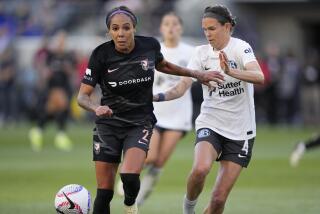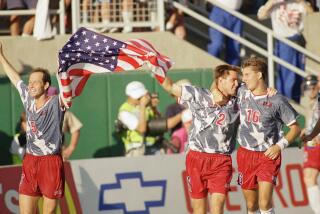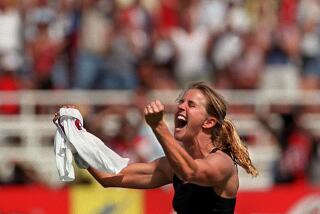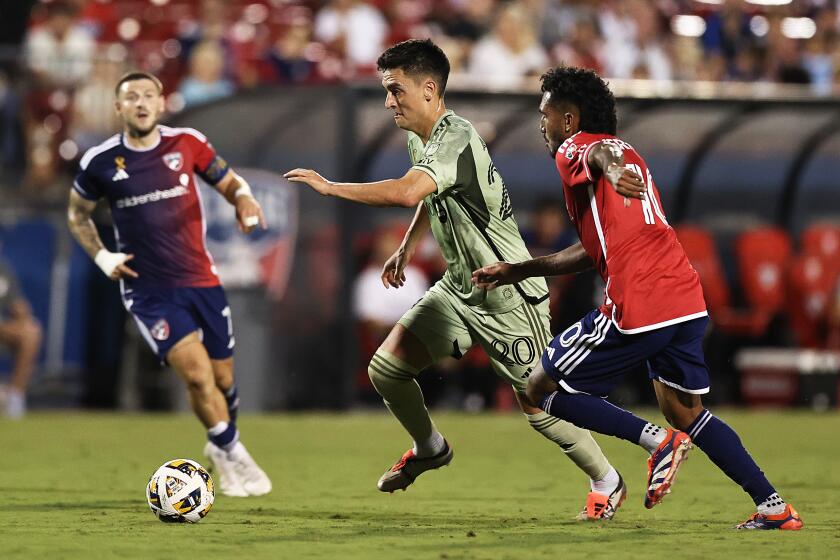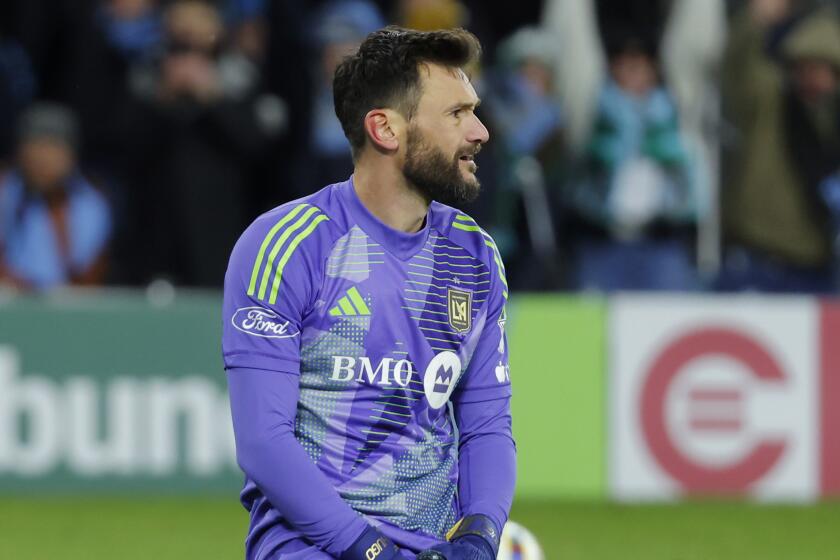Sunil Gulati mixes soccer with economics for new women’s league
Sunil Gulati knows economics. So much so that students at Columbia, where he is a senior lecturer, have been known to spend as many as 13 hours in a registration line to get a spot in his class.
Gulati also knows soccer. So much so that Alan Rothenberg, the founder of Major League Soccer, called him “the single most important person in the development of soccer in this country.”
Now we’re about to discover whether Gulati knows how to make the two work together because Wednesday, Gulati, president of U.S. Soccer, announced the formation of an eight-team women’s professional league that will begin play in the spring.
It’s the third time a women’s soccer league has been launched in the U.S. in the last 12 years — and the first two lasted just three seasons before folding, with economic issues fueling both collapses.
Gulati promises that won’t happen this time.
“The model is quite different both in terms of the sort of players that you might go out and get internationally, in terms of the marketing and promotional efforts and maybe in terms of some of the stadiums,” he says. “What we need is a sustainable model: less hype, better performance. The hype will come if we have the performance.”
And Gulati is so sure it will work he’s gambling U.S. Soccer’s reputation and riches on the idea.
The federation will not only fund the league office — paying for such things as scheduling, promotions and websites — but it will also pay the salaries of up to 24 national team players who will participate in the league. The governing body for Canadian soccer will sponsor 16 players and the Mexican federation will pay for eight. That means as many as a third of the women suiting up for games in any given week will not only be playing at no cost to their teams, but they will be coming from three of the 24 teams that played in the last World Cup.
“It is something unique,” says Dennis te Kloese, national teams coordinator for the Mexican federation. “We’re trying to make a good effort of improving our women’s soccer in Mexico. We’ve made strides the last few years and I’m 100% sure that this initiative will be a very good next step for us.”
For the three federations, the step is more than good; it’s both logical and necessary. With the next major international competition for women, the 2015 World Cup in Canada, nearly three years away, the prospect of running a residency training program that long is both expensive and impractical. And farming players out to professional leagues in Europe or Australia would cause hardships many women aren’t eager to endure.
The solution, then, was a domestic league made up mainly of the best players in North America.
“All of the people we interviewed at the national team position said the best way to take this program forward long term is to have a league,” Gulati says. “You get more players an opportunity to be seen. You get players playing daily. And you get players playing in different environments — team players who have a different role on the national team and now they have to take a leadership role in a club team and develop those abilities.
“So across the board the best way long term to develop is in a league format where the challenges are every day.”
But while Gulati the soccer expert saw the league as a no-brainer, Gulati the economist concluded the private sector wouldn’t be able to make it work without a giant public stimulus package. So he brought the two — the sport and the support — together.
“Clearly, if one wants to do it, those three federations being the government, we are subsidizing the private sector here to try to make it sustainable, to try to make the investments necessary by the private sector smaller,” he says.
The as-yet-unnamed league will play a 22-game schedule running from March/April though early fall. Four of the teams — in Boston, New Jersey, western New York and Chicago — were part of the defunct Women’s Professional Soccer league. The other clubs are located in Portland, Ore.; Seattle; Kansas City, Mo.; and Washington, D.C. Six of those eight teams are located in cities that also have MLS teams, yet only the Portland franchise will have official ties to the men’s team.
Glaring among the omissions is California, where half the members of last summer’s Olympic champion women’s national team — among them Alex Morgan, Megan Rapinoe and Shannon Boxx — either grew up or played college soccer.
“Obviously [we] were disappointed in the decision to not include L.A. in the new women’s pro league,” says Steve Miller, owner of the L.A. Strikers women’s team, who submitted an application to join the group. “There is more women’s soccer in Southern California than in virtually [any] other region of the U.S. Cutting out one of the major regions for the sport in the country is probably not one of the best ways to start.”
But it is a start.
The challenge now for Gulati, the soccer economist, is to keep the league afloat. And if he can pull that off, the lines for his Columbia lectures figure to get even longer.
